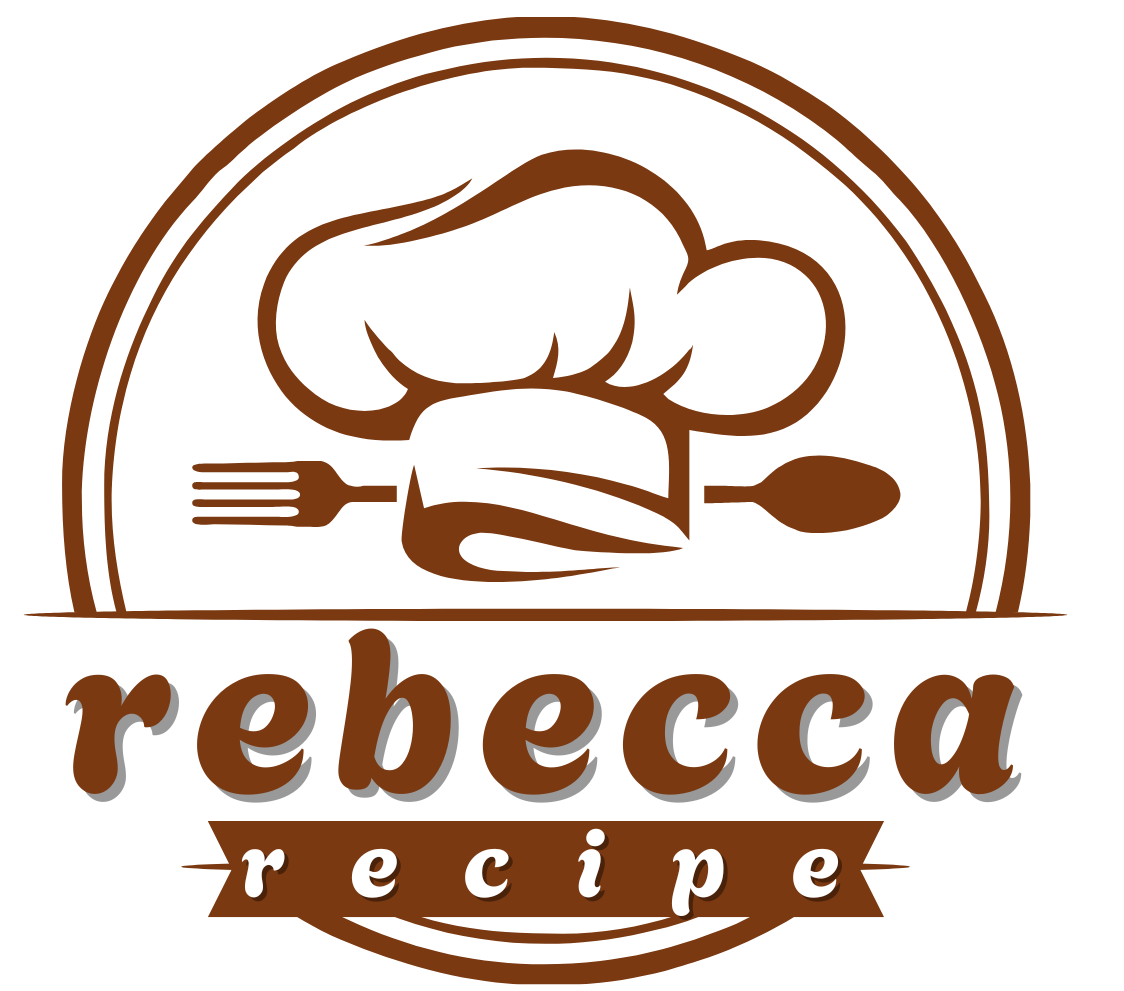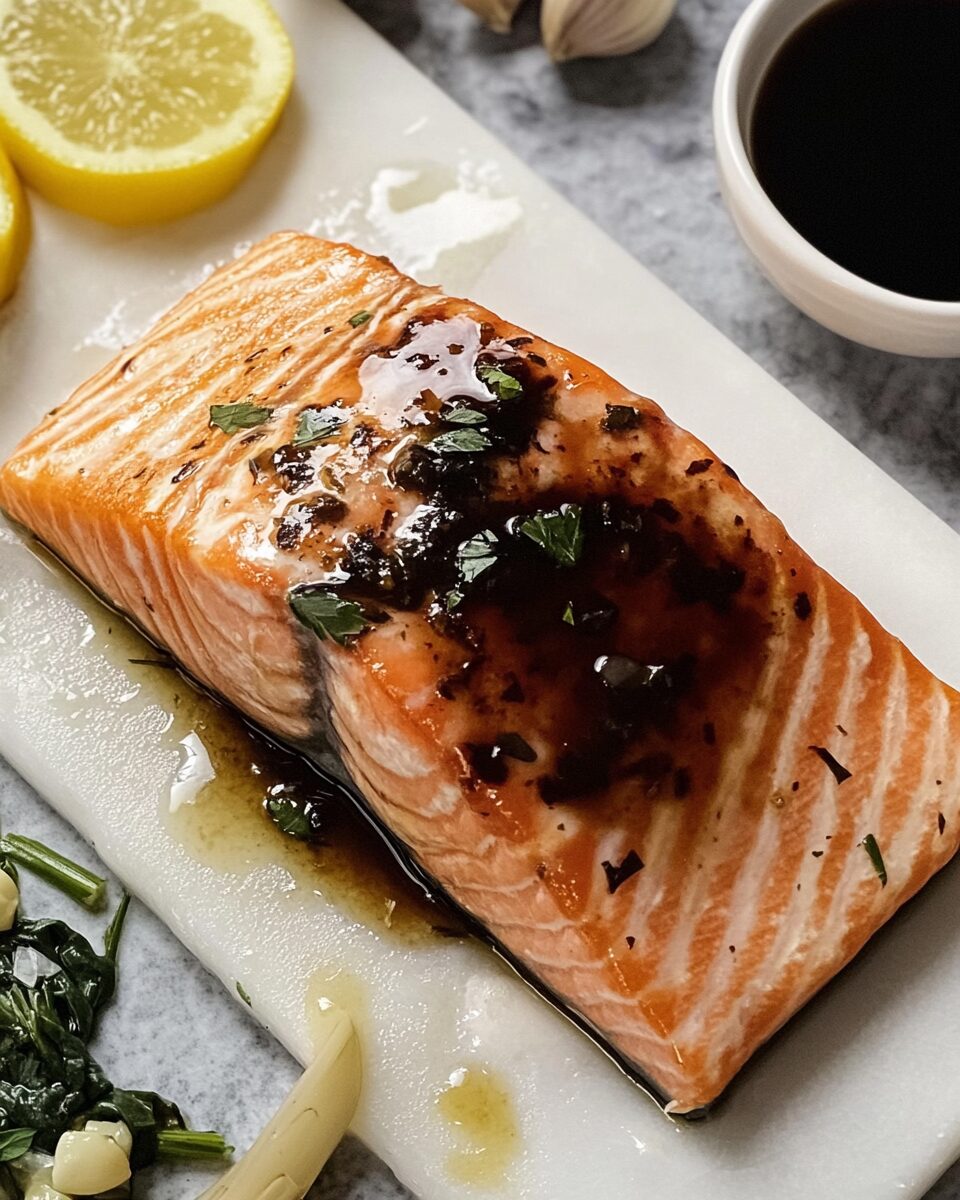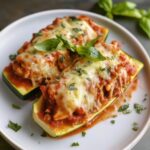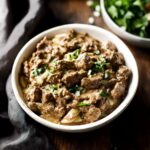Balsamic-Glazed Salmon Fillets feature a flavorful glaze made with balsamic vinegar, garlic, honey, white wine, and Dijon mustard, enhancing the rich taste of baked salmon.
Full Recipe:
Ingredients
- 4 cloves garlic, minced
- ⅓ cup balsamic vinegar
- 4 teaspoons Dijon mustard
- 1 tablespoon honey
- 1 tablespoon white wine
- Salt and pepper to taste
- 6 (5-ounce) salmon fillets
- 1 tablespoon chopped fresh oregano
Directions
-
Preheat the oven to 400°F (200°C). Line a baking sheet with aluminum foil and spray with nonstick cooking spray.
-
In a small saucepan coated with nonstick cooking spray, cook and stir the minced garlic over medium heat until soft, about 3 minutes.
-
Stir in the balsamic vinegar, Dijon mustard, honey, white wine, salt, and pepper. Simmer uncovered until slightly thickened, about 3 minutes.
-
Arrange the salmon fillets on the prepared baking sheet. Brush the fillets with the balsamic glaze and sprinkle with chopped oregano.
-
Bake in the preheated oven until the salmon flakes easily with a fork, approximately 10 to 14 minutes.
-
Brush the fillets with any remaining glaze and season with additional salt and pepper if desired.
Nutritional Facts
Per serving:
- Calories: 283
- Total Fat: 12g
- Saturated Fat: 2g
- Cholesterol: 94mg
- Sodium: 150mg
- Total Carbohydrate: 7g
- Dietary Fiber: 0g
- Total Sugars: 6g
- Protein: 34g
Why This Dish Stands Out
Balsamic-Glazed Salmon is more than just a simple fish dish—it is a perfect harmony of flavors that transforms an everyday piece of salmon into a restaurant-quality entree. The glaze caramelizes slightly during baking, locking in moisture and creating a glossy, flavorful finish. The dish is sophisticated enough for entertaining guests but easy enough to prepare on a busy weeknight.
What makes this recipe stand out is its ability to highlight salmon’s natural flavors without overpowering them. Balsamic vinegar’s acidity enhances the taste of the fish, while the honey and Dijon mustard balance the tartness, resulting in a rich, complex profile that’s both sweet and tangy.
Health Benefits of Salmon
Salmon is often praised for its nutritional profile and health benefits. It is one of the best sources of omega-3 fatty acids, which are essential for heart health, brain function, and reducing inflammation. These healthy fats can help lower blood pressure, improve arterial function, and reduce the risk of heart disease.
Additionally, salmon is high in high-quality protein, which is important for maintaining muscle mass and bone health. It is also rich in B vitamins, particularly B12, which supports nerve and blood cell health. Selenium, another nutrient found in salmon, contributes to a healthy thyroid and immune function.
With so many essential nutrients, salmon is widely regarded as one of the most nutritious foods you can eat, making this dish not only delicious but also beneficial for your overall well-being.
The Role of Balsamic Glaze
The balsamic glaze in this recipe is both a flavor enhancer and a visual element. Balsamic vinegar, known for its rich, slightly sweet taste, adds depth to the dish. When reduced and combined with honey and mustard, it becomes thick and glossy, coating the salmon with a luscious glaze that also helps retain moisture during baking.
This glaze also adds a burst of umami flavor, making each bite more satisfying. The addition of garlic and Dijon mustard introduces layers of flavor, offering both sharpness and warmth. This complex blend brings out the best in the salmon and elevates the dish into something special.
Perfect Pairings and Serving Suggestions
Balsamic-Glazed Salmon pairs wonderfully with a variety of side dishes and can fit into multiple types of meals. For a light and healthy dinner, consider serving it with steamed vegetables such as asparagus, green beans, or broccoli. A side of quinoa, wild rice, or couscous can offer texture and soak up any extra glaze.
If you’re aiming for a more indulgent spread, pair the salmon with garlic mashed potatoes or a creamy risotto. For a fresh contrast, a mixed greens salad with citrus vinaigrette adds brightness and freshness to the meal.
This dish also works well in a variety of formats: over a bed of salad for a lunch option, in a grain bowl, or even as the centerpiece of a dinner party menu. It’s flexible enough to be adapted based on dietary needs or personal preference.
Why This Recipe Works for Various Lifestyles
This recipe is ideal for a range of dietary lifestyles, including low-carb, gluten-free (with proper ingredient choices), and pescatarian diets. Because it’s made with whole, minimally processed ingredients, it aligns well with clean eating principles. The recipe avoids heavy creams or fried elements, which often add unnecessary calories, making it a great option for those watching their weight or cholesterol levels.
It’s also worth noting that the simplicity of the ingredients allows you to control the portion sizes and flavor intensity. Whether you’re meal prepping for the week or cooking for two, this dish scales easily and stores well, maintaining its flavor and texture after reheating.
Cooking Tips and Tricks
To achieve the best results, consider the following tips:
-
Use fresh salmon: While frozen salmon can work in a pinch, fresh fillets will yield a better texture and flavor.
-
Don’t overcook: Salmon is done when it flakes easily with a fork and reaches an internal temperature of 145°F (63°C). Overcooking can result in dryness.
-
Customize the glaze: If you prefer a bit of heat, try adding a pinch of crushed red pepper or a dash of cayenne.
-
Marinate briefly: For deeper flavor, brush the salmon with the glaze and let it sit for 15–20 minutes before baking.
-
Presentation matters: Garnish with fresh herbs like oregano or parsley and a lemon wedge for visual appeal and added flavor.
Origins and Cultural Inspiration
While the concept of glazed salmon is not new, this particular combination of ingredients reflects a modern fusion of Mediterranean and European influences. Balsamic vinegar is a traditional Italian condiment, while Dijon mustard has French origins. Together, they form a cross-cultural blend that is both refined and approachable.
Such combinations are becoming increasingly popular in global cuisine, as home cooks experiment with simple, high-impact ingredients that yield bold flavors without the need for complex techniques. This recipe captures that essence, offering both elegance and simplicity in a single dish.
Versatility and Customization
One of the best things about this recipe is its versatility. The glaze can be used on other proteins like chicken or tofu, making it a great base for those who enjoy experimenting in the kitchen. You can also play with the flavor profile by adding orange zest, soy sauce, or even fresh ginger for a different twist.
For those avoiding wine, the tablespoon of white wine can be replaced with apple cider vinegar or a splash of lemon juice to maintain acidity. Likewise, the honey can be substituted with maple syrup or agave nectar for a different kind of sweetness.
The dish can also be cooked using various methods: while baking is the most straightforward, the salmon can also be pan-seared for a crisp exterior or grilled for a smoky finish.
Sustainability and Choosing the Right Salmon
When buying salmon, it’s important to consider sustainability. Wild-caught salmon, particularly from Alaskan fisheries, is generally regarded as a more sustainable option compared to farm-raised varieties, which may have higher levels of contaminants and environmental impact.
Check for certifications from organizations like the Marine Stewardship Council (MSC) to ensure that the salmon you’re buying is sustainably sourced. Not only is this better for the environment, but wild salmon also tends to have a richer flavor and firmer texture.
Storage and Leftovers
Leftover balsamic-glazed salmon can be stored in an airtight container in the refrigerator for up to 3 days. It can be reheated gently in the oven or microwave, though care should be taken not to dry it out. Leftovers are perfect for salads, sandwiches, or wraps, making this recipe an excellent meal-prep option. The glaze can also be made in advance and stored separately. This allows for quicker assembly when you’re ready to cook, especially if you’re juggling a busy schedule.
Conclusion
Balsamic-Glazed Salmon Fillets are a prime example of how a few well-chosen ingredients can elevate a simple protein into a refined and satisfying dish. The sweet and tangy glaze enhances the natural richness of the salmon, offering a flavorful experience that appeals to a wide range of palates. Its health benefits, culinary flexibility, and easy preparation make it a winning choice for both novice and experienced cooks alike.






